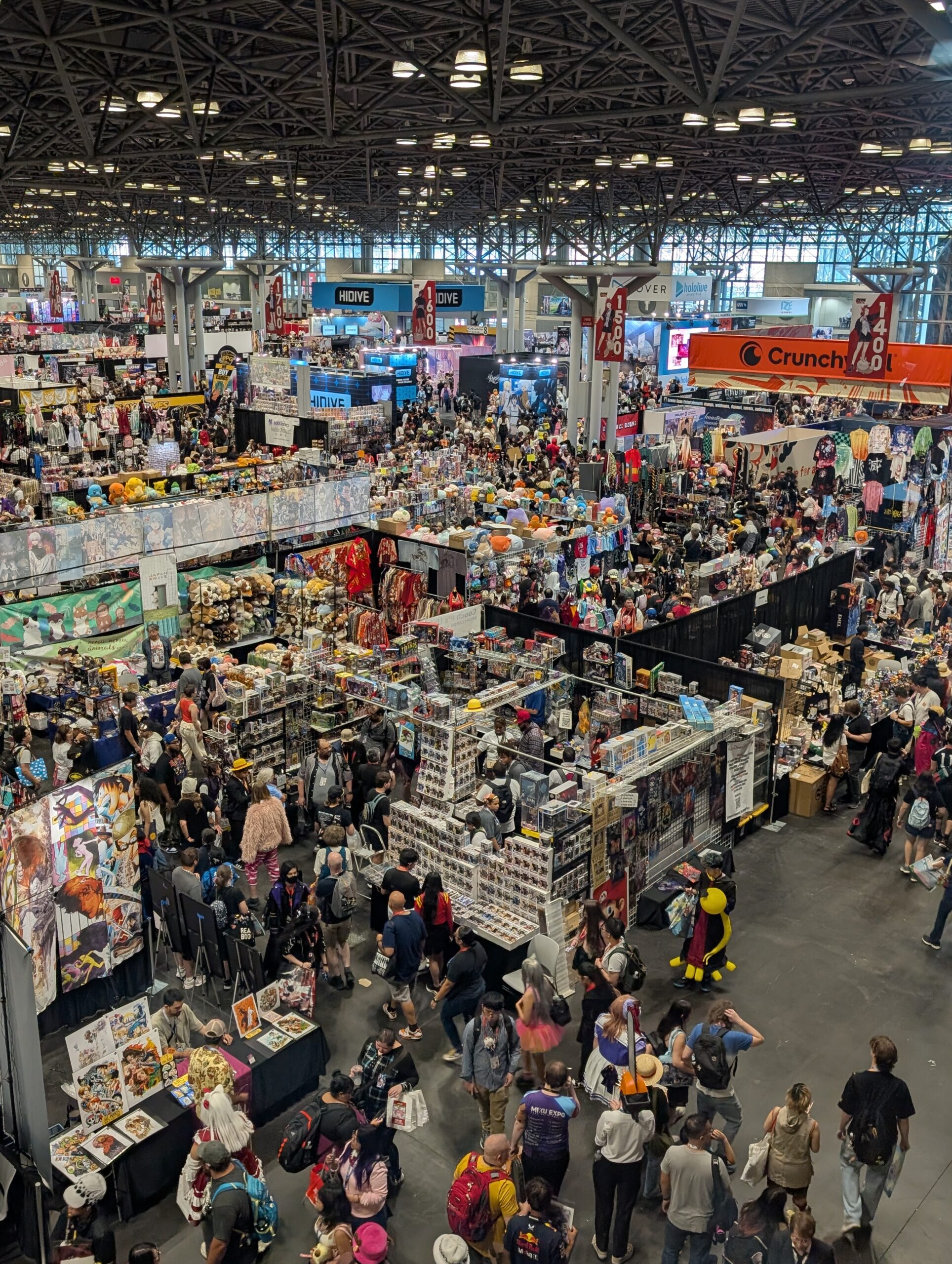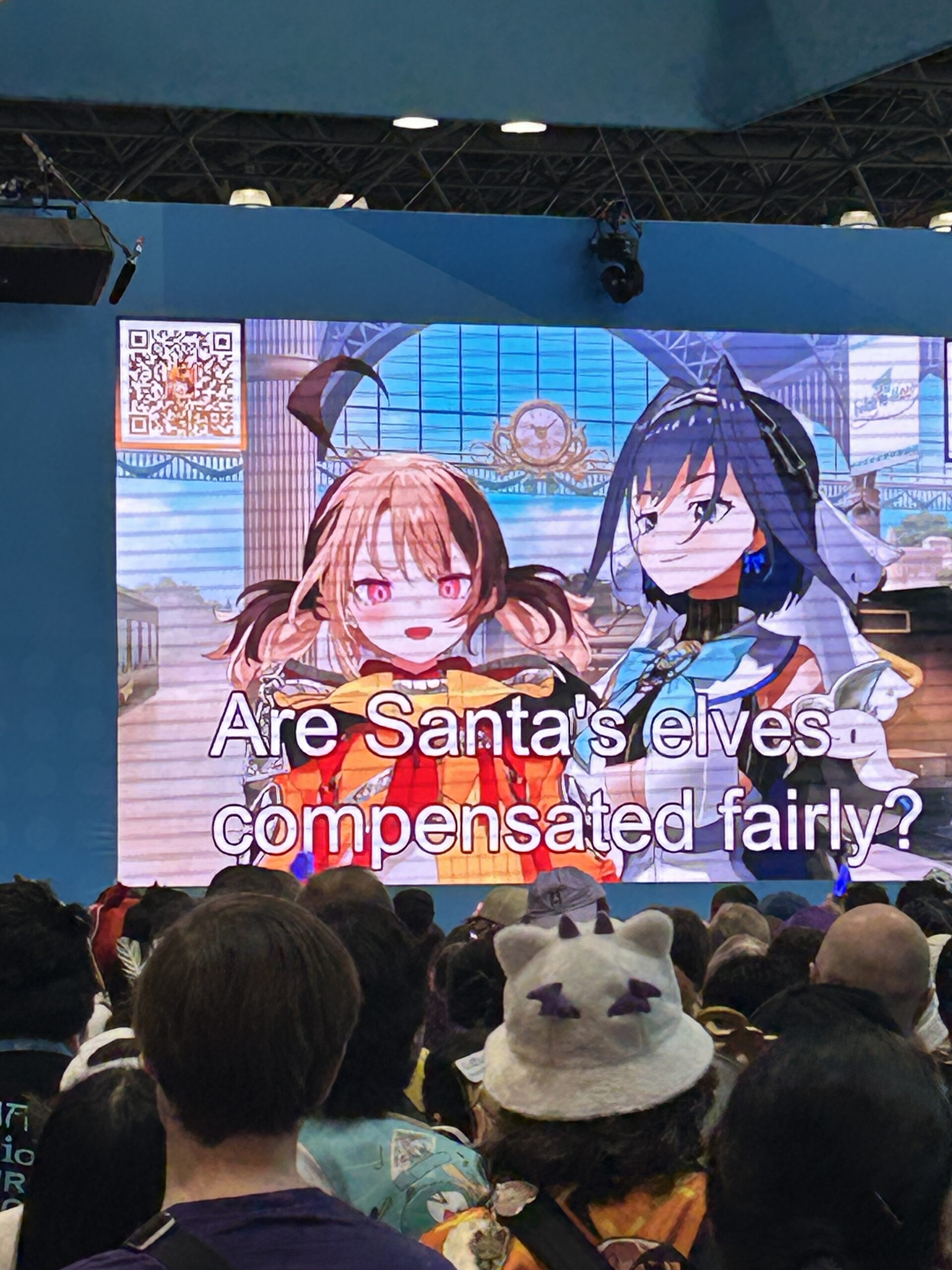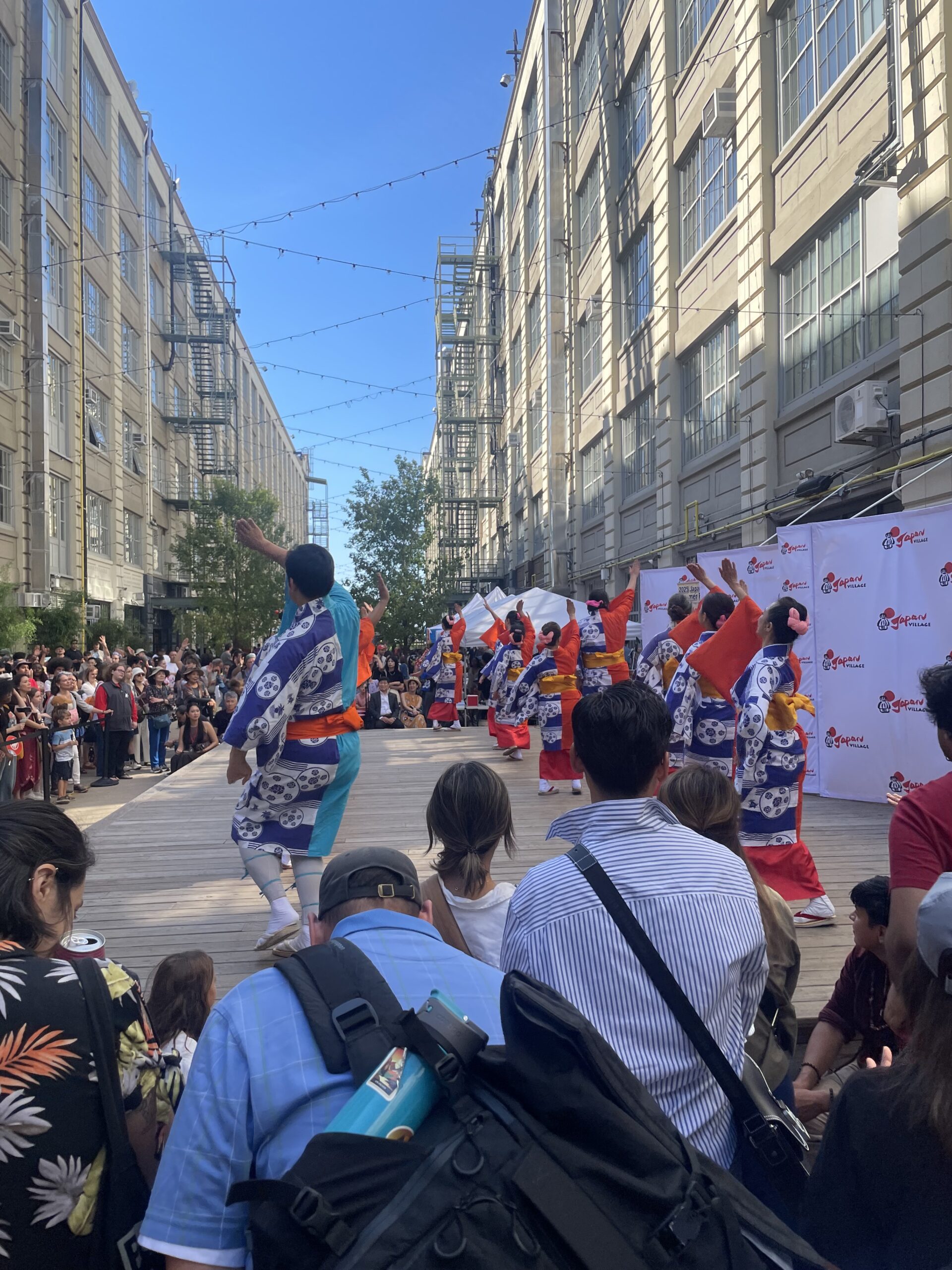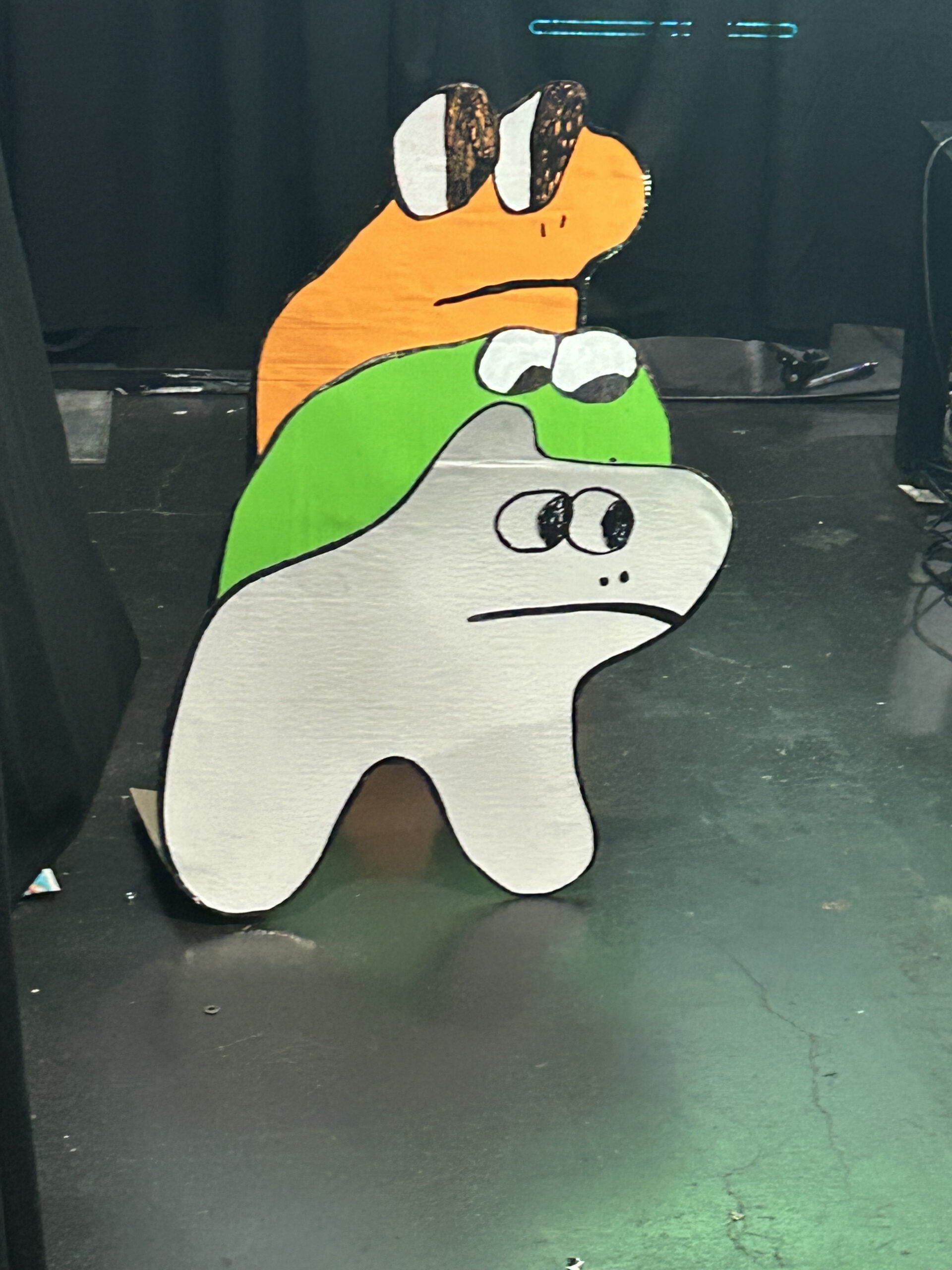New York City is many things at once: first love, old friend, ghastly apparition, hope for the future. I’ve spent about 10 years of my life here as of this past month, and I continue to find new things both good and evil about this place that I call home. One thing that’s been consistently difficult to house, I would say, is the experience of an anime convention. I personally never went to an anime con in my adolescence, the only close thing I got to was a steampunk convention in Piscataway only because I knew the singers of the band Steam Powered Giraffe would be there (for two years in a row I had The Spine sign things for me – an old marching band cap and a copy of Gungrave on PS2). I would hear about the allure of places like AnimeNEXT, Sakura Con, and other events wh...
New York City is many things at once: first love, old friend, ghastly apparition, hope for the future. I’ve spent about 10 years of my life here as of this past month, and I continue to find new things both good and evil about this place that I call home. One thing that’s been consistently difficult to house, I would say, is the experience of an anime convention. I personally never went to an anime con in my adolescence, the only close thing I got to was a steampunk convention in Piscataway only because I knew the singers of the band Steam Powered Giraffe would be there (for two years in a row I had The Spine sign things for me – an old marching band cap and a copy of Gungrave on PS2). I would hear about the allure of places like AnimeNEXT, Sakura Con, and other events where teens and twenty-somethings would gather for a weekend wearing their excitement for animation on their sleeves, shirts, cosplays, and more. Getting to go to Otakon two years ago was a delight, especially having that experience shared with John of the site and some other friends!
However, it’s an experience that’s pretty different to that initial mystique of being 12 to 22 and running amok in a hotel space in terms of access, my own time spent in and out of the con, and just overall expectations of what I chose to do with my time. What really lasted with me was the spaciousness of the convention center and how it acclimated to the experience of exploring DC; a real synthesis between the city and its community. Now, I’m someone who thinks a lot about spaces both in the abstract and the physical and having just spent time at Anime NYC, I can’t help but muse over the longevity of what has now become New York’s premiere anime convention. Not from a point of attendance or ticket sales—the density of the three days I was there truly assuaged the worry that this whole “anime” thing will get old—but more so longevity in the form of sticking to that title: New York’s premiere anime convention. We’re months past the news of Anime Expo in LA outgrowing its home at the LA Convention Center and requiring new solutions to house its expansion, and the seventh year of the Javits Center hosting the event is no longer a difficulty in the worry of lack, but now is something to eye cautiously in the wake of an ever expanding interest in Japanese cartoons.
Thursday night I went to pick up my badge and have a quick look at things in the exhibitor space and artist alley. A friend asked me to pick up some merch from an artist they liked, which felt like a good excuse to look around for a bit. I kid you not when I say that the attendance was already packed for this day, a healthy stream of folks shuffling in and getting to do some shopping for the evening. Some folks even had just the pass for that night and came through decked out in cosplay. For context, this was the first year ANYC would add a Thursday to their duration and the second year they would move the event from its typical stay in November just before Thanksgiving to late August. Now, this con has been running on the books for seven total years but it’s important to highlight 2020-2022 in terms of how the convention had to handle the COVID-19 pandemic, its return in December 2021 being impacted by the spread of the Omicron variant. I don’t highlight this to mar the handling of the convention itself, but rather illustrate the fact that the organizers at LeftField Media had three years to develop a cadence before needing to reconsider what this convention looks like at all in an era of enhanced paranoia around body autonomy. An additional evening to go around the convention space doesn’t seem like much on the outside, but to be in the space and really see the vibrancy on a weekday was incredible to say the least. It imparted this excitement for Friday that I didn’t really expect going in; that I would take part in this at all was a treat.

Friday morning I made my way to the Javits Center, the 7 train flooded with Akatsuki robes and safe-for-public katanas. As I walked past the initial registration I could already see a plethora of people modeling for photos and scrambling to line up for exhibits. Among the things I had the chance to check out I was able to pick up a copy of Young Magazine since they were handing those out! It’s been a topic of conversation already but it’s cool to see manga magazines make a resurgence, especially in this case where the official poll is out for folks who’ve read everything to have their say on what keeps up publication. As I headed out past the comically large cube of manga, I ended up wandering through the exhibitor hall for a bit taking in the immediate landmarks of the space.
Something very important happened in the last 25 years of United States culture: companies found out that anime was popular. Insanely popular. Evan Dorkin’s Eltingville and KC Green’s Anime Club comics are perhaps the best distillation of what the quarter century has looked like and how this perception of nerdom as an otherworldly assemblage of losers and socially inept ne’er-do-wells, something that can still be encountered if online discourse is to be examined but overall this doesn’t really count as the norm. You have kids into anime, dads who have whole collections of Goku from Dragonball Z, people who grew up on the early broadcasts of Toonami who now have become career professionals or full on heads of households. The explosion of anime as an industry, as something to gain capital from, has definitely impacted the look of these conventions from the initial swaths of hotel lobbies with unkempt pink and blue wigs. The marquee edifices of the weekend were booths for Viz, Crunchyroll, HiDive, and Cover.
The Cover pillar, for a lack of a better term, was honestly the most interesting when it came to fan interaction. Vtubers have been around for a minute, and as I continue to have more conversations in the space, it’s interesting to see just how much of an initial explosion the scene is having currently. Cover’s display was a large screen where for the whole weekend folks could be seen with glowsticks in hand cheering and singing along to various Vtubers who would show up and sing or interact with the crowd. You’d really be able to hear them no matter where you were in the venue, and I say that with full awe. Amidst all the storefronts or food vendors you had something that felt really engaging without the limits of spots in a line.
All weekend there were people, glowsticks in hand, singing along to songs or getting the chance to engage with one of their favorite personalities. Similar screens were available for indie Vtubers when I walked around the exhibitor space which was cool to see. There’s a growing particularity around the demarcation between anime and Vtuber fans that feels familiar to nerds of the new millennium being very cagey around the aforementioned tweens who were getting more and more into that newfangled Japanimation. Events like Offkai definitely mark the viability of catering to this niche directly, but like Yagoo had told me in our conversation last July, the two are linked intrinsically, and hearing a whole cluster of folks cheer to someone singing a version of Sugar Song and Bitter Step was a reminder of that link.

Saturday was a bit of a detour for me actually in terms of how I spent my time adjacent to the convention weekend. I ended up taking some time not in Manhattan but in Brooklyn for the Japan Village Summer Festival, a celebration of Japanese festival culture through dance, food, and music. For those outside of New York, Industry City is this stretch of former factory buildings that have been repurposed into retail and commercial centers and Japan Village is a dedicated nook that houses an Asian market, some restaurants, and little stores including a Book-Off and a Daiso. It’s a quieter space on most days, but this festival brought out a crowd of folks excited to engage with the cultural piece of the event. It’s safe to say that many Western fans of anime develop an initial exposure to Japan through that media consumption, which can be detrimental if that’s the only exposure that someone gets: See also; an understanding of India through Bollywood alone or thinking Mexico is really that yellow after you binge watch Breaking Bad.
There were less droves of cosplayers and more families and curious passersby once the dances and festivities started. Those opportunities for further appreciation of a culture are very special, thinking back to this February where I had the chance to watch Nobuhiko Obayashi’s Onomichi Trilogy of films thanks to ANYC’s nonprofit partner Japan Society. Multiculturalism is an important facet of any city and it’s no different in New York based on the three separate Chinatowns, Muslim and Jewish communities, and growing clusters of neighborhoods with strong Caribbean, African, Eastern European, and Latin American communities. Not only was it cool seeing practitioners of traditional Japanese dances, it was also awesome to see the mayor of a town in Aomori come by and be so joyful at the folks in this outdoor space learning to do the traditional dance of his town and to do so despite the sheer fear of being perceived doing something with no training. Having just been in Japan this past November, the sun setting as folks emptied out of the plaza after the carrying of a mikoshi reminded me for a minute of my time in Kyoto as crowds exited the Fushimi Inari shrine to continue their evenings. Different in scope, but the walk home after a full day of fun still resonated.

Come Sunday, I felt the fatigue of a very active weekend hit me all at once. I used this day to wrap up any final purchases and wander about the exhibitor halls and game spaces. In the basement level of the Javits Center there were a plethora of game centric booths and displays. The Play NYC feature allowed multiple developers in the city to come and show off their demos, which drove several different crowds to the scene. Some demos included of the Devil, the visual novel by studio Nth Circle which Rose got to check out earlier this year, the team behind Tough Love Arena showing off their new game Scramble Heart City, and the brain behind Horse Race Test’s new game Scrapeboard which has players using an actual whole skateboard deck on top of a pad and positioning yourself in stances to fight bosses. At the back of the space you had lines of folks playing board games, mahjong, and various arcade cabinets and rhythm games. These features are pretty standard for convention spaces, but the mix between indie developers showcasing their work with spots for folks to hang out and play with one another was really welcome all the same. I ended up running into a friend at the last minute and as we made final rounds through the artist alley, the collective tiredness of both vendors and congoers was palpable. We ended this evening in Koreatown with bags full of charms and posters and mouths full of killer chicken sandwiches which I won’t disclose the location of, because I wanna go there without a line dammit! But nevertheless, Anime NYC had come to an end for the seventh consecutive year with several happy attendees.

I want to take a moment to discuss the Javits Center. I need to discuss the Javits Center. On its own, as a space that houses several events. I have come to know this location as the home of the AKC Meet the Breeds convention in January where you can walk the basement area and meets thousands of dogs in January, the center for the Specialty Food Association Fancy Food Show where I had helped an organization with selling their product to potential buyers as my first exposure to B2B enterprise, and almost 10 years ago was the place that one Hillary Rodham Clinton chose to host her victory party for the 2016 presidential election. It is a location known by many New Yorkers in a breath of resistance, to say the least. The glass paned convention hall is situated right outside of the Lincoln Tunnel and the subway line to get there puts you smack dab in front of famous nightmare obelisk The Vessel. A walk away from stress centers Penn Station and Port Authority, an end point of the High Line park built overtop an old subway line, surrounded immediately by high rises that are also nameless pillars of mirrors. I don’t love having to come here, I’ll be perfectly honest. But this is the space that perfectly confines an event like Anime NYC, has the space and capacity to have this crowd that condenses in vendor spaces, but has locations to rest outside of that. I admittedly didn’t see all the panel spaces or explored into the main hall during my time at the convention, which made my brief encounter with JAM Project all the funnier.
That space, however, is unfortunately traded out for a location that feels so disparate to the rest of the city. A convention can exist in its venue all alone, just look at Magfest and Combo Breaker who hold their events in the hotels they also use for guests. The key difference there is that these cons running in the same space as lodging allows for a 24 hour experience that guests make full use of while a convention center has restrictions to how long things can run throughout the day. The lights off warnings on Friday were funny to experience in the moment, clusters of congoers scurrying to a booth before folks officially had to wrap things up. Obviously one can go to various after parties and events when the convention center closes, but again it’s a matter of knowing just where to go and who to hit up for those opportunities that can feel cumbersome if you aren’t acclimated to the hustle and bustle of New York.
I have personal ire towards midtown as someone who has to work there on occasion, but where to hold a convention this massive is an issue with little solutions in the grand scheme of things unless LeftField Media really want to try their hands at hosting a con in a baseball stadium or a horse racing track (the overlap between “place I can spend my money” and “place I got my COVID shot” actually being 3-for-3 in these examples). Independent events like Anime Holyground, a convention ran by folks who also curate anime-centric nightlife events here in New York, can help with the clamoring of weeaboos here in the city, but cannot be the only runoff while folks wait for next August to roll around. Tariffs and general hostility to outside entities also pose questions around what could be available for next year’s convention, especially as foreign relations continue to sink into the toilet thanks to people who are Really Good At Making Decisions. Also, every other person I would talk to in relation to wifi access had resigned to the fate of using their phone as a hotspot for any writing or laptop access, myself included. Artists would have difficulty with establishing tap-to-pay connections because of this as well, which is something genuinely concerning when folks like myself in New York slowly stop making use of cash with the abundance of tap to pay services.
Despite the logistical gripes, Anime NYC reminded me of why these events matter: the chance to share an interest with a person. I ran into an old friend from high school completely by chance and we spent Friday talking about how things have gone since we last met at Comic Con of 2019. I also ran into several friends of friends and new folks in cosplay who were so eager to engage in conversation or get a quick picture. I also really appreciated seeing how many folks were local to the community as much as there were people flying in from other parts of the world. The reality of conventions like Anime NYC is to expand as much as logically possible, for better and for worse. Amidst the growing pains and shifts of the industry, there is still a central focus on the fan and what the passion of a fan can allow for. It’s the young child looking in awe at the person wearing a costume of their favorite character, a fan meeting face-to-face with one of their favorite artists for an autograph. Leaving the convention center was like undertaking a great task, and from it I have various trinkets to showcase and stories to tell until the next chance I get to meet with folks. For that I appreciate what Anime NYC has been able to create for folks, and in turn I’m eager to see how our local fandom continues to bring that passion to the Javits Center next year.
The post Fandom For Fun and Profit – Anime NYC Retrospective appeared first on Gamesline.